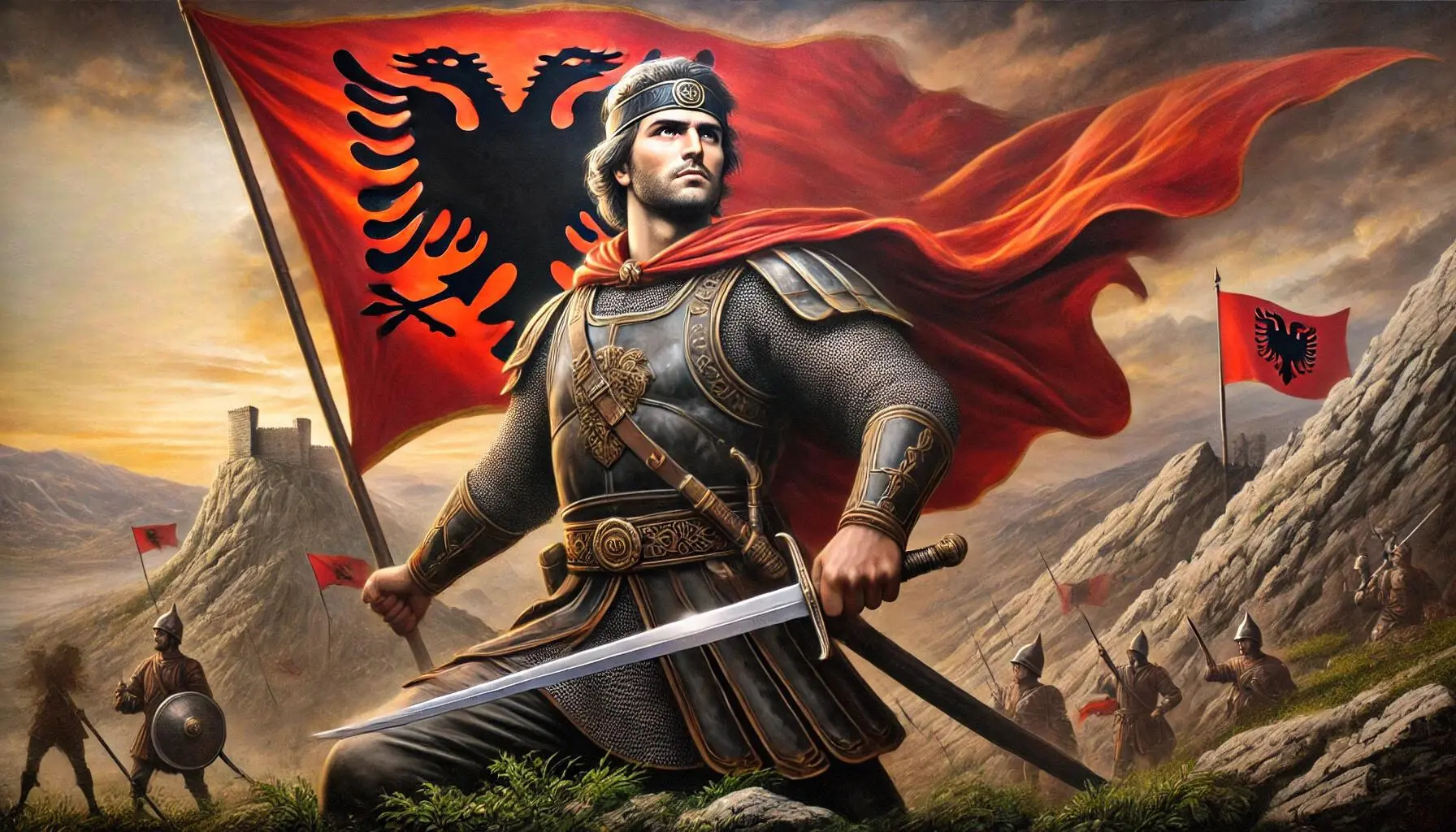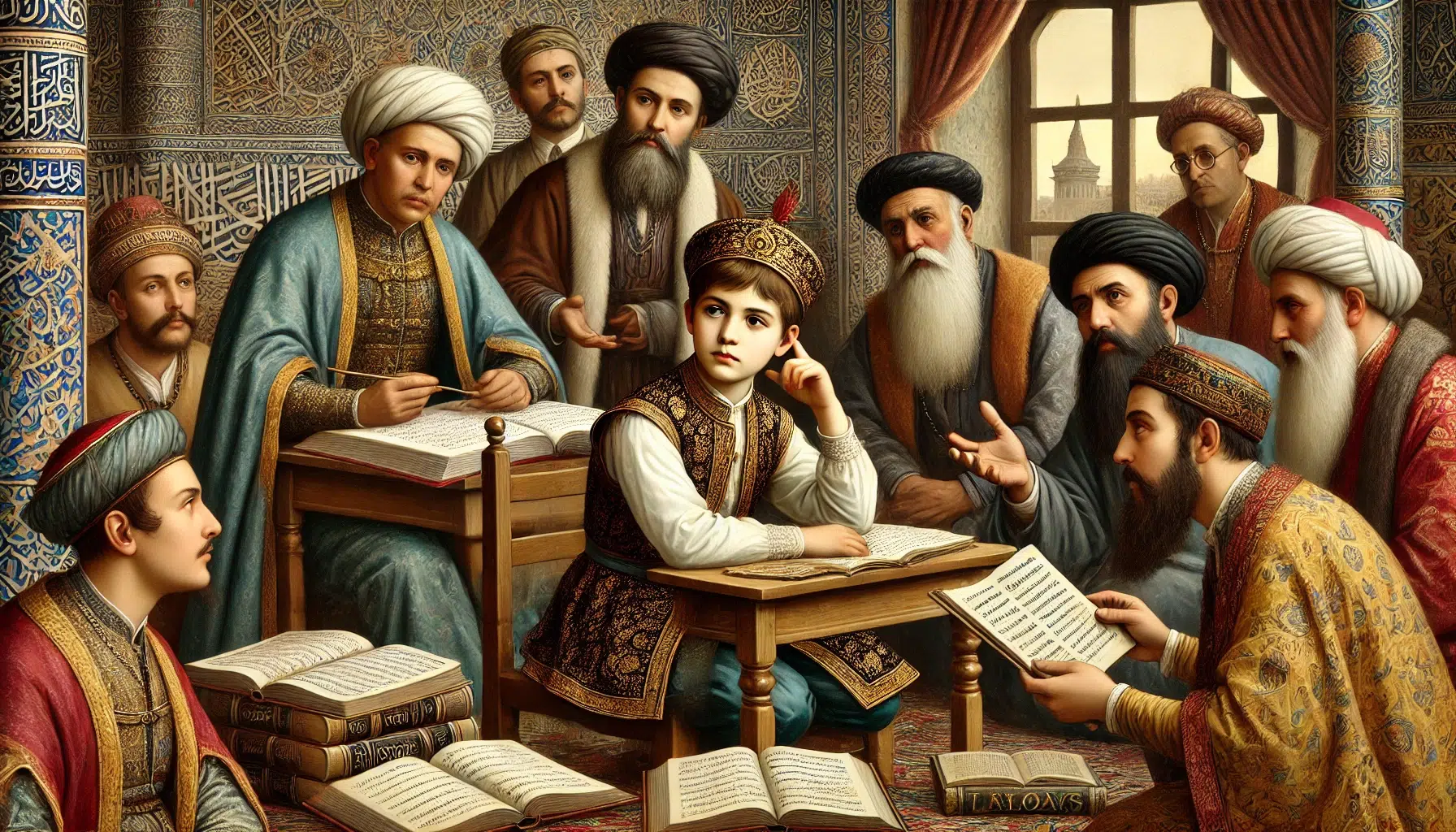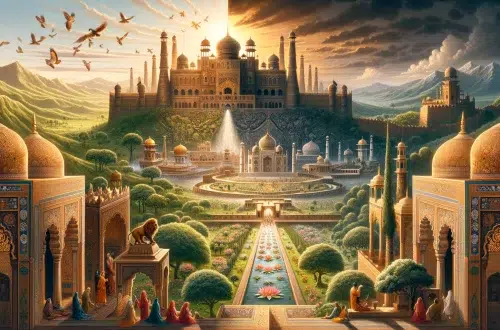
Mehmed the Conqueror Sultan of Ottoman Empire
Mehmed II, better known as Mehmed the Conqueror, ruled the Ottoman Empire twice. He would reign twice, from 1444 to 1446 then again from 1451 to 1481.
He is regarded as one of the greatest sultans of the Ottoman Empire.
Mehmed became famous for his military might, especially for capturing Constantinople at just 21 years old. This victory marked the end of the Byzantine Empire.
Under his rule, the Ottoman Empire grew strong, reaching across Anatolia and the Balkans. Much of what we see in modern-day Turkey honours his name and achievements.
This includes the Fatih district in Istanbul, the Fatih Sultan Mehmet Bridge, and the Fatih Mosque, all named after him.
Early Life of Mehmed
Mehmed II was born on March 30, 1432, in Edirne. This city was the capital of the Ottoman state at the time.
He was the fourth son of Sultan Murad II and Hüma Hatun, making him destined for leadership.
At the ago of five, Medmed moved to the Black Sea city of Amasya. He would become the governor of the province, following his brother Ahmed’s death.
As a child of a Ottoman royalty, he was given the opportunity to study under the best scholars, learning history, theology and other languages. The tutors, known as lalas, would prepare the royals in leadership and administration skills.
This early experience helped shape his leadership skills and deepened his Islamic knowledge. It also fostered his strong Muslim beliefs.
Mehmed’s First Reign (1444 to 1446)
Mehmed’s father, Murad II, struggled with both domestic and foreign conflicts, and would step down in 1444.
In August 1444, Mehmed II, only twelve, then became sultan. Despite his tender age, he showed remarkable courage and wisdom.
However many of his father’s conflicts still continued for young Mehmed.
This victory was due to his strong commitment to Islamic principles. It greatly influenced his reign, inspiring him to expand the empire. It also pushed him to become a significant Islamic leader.
Seeking to take advantage of the child sultan, Pope Eugene IV began to assemble forces for a new crusade. Thus breaking a peace treaty with Murad II.
At the same time rulers in southern Greece began their own movement into Thessaly, in northern Greece.
These conflicts would convince Murad to return to the throne and lead the army to deal with the threats. Murad’s victory at Varna would put an end to the crises.
Second Accession to the Throne
After his father, Murad II died in 1451, Mehmed II would becoming sultan of the Ottoman Empire again.
His goal was to capture Constantinople, a centre of the Byzantine Empire.
To achieve this, he made the Ottoman Navy stronger and prepared his army well. He even built strongholds to secure his position.
The battle for Constantinople started in the spring of 1453. The Ottomans overcame the city’s defenses after two months of fighting.
This win not only brought down the Byzantine Empire but also made Mehmed II the new Roman Empire ruler. Constantinople’s leaders accepted his rule, announcing him as the new Roman emperor, qayṣar-i Rūm.
Conquering Constantinople was a big moment for Mehmed II.
He changed Hagia Sophia into a mosque and set up funds to keep it running.
He quickly improved the city, adding houses and shops.
By 1478, Constantinople became Europe’s biggest city. This achievement cemented his place in Ottoman and Byzantine history.
Conquest of Constantinople

The Siege of Constantinople in 1453 was a key moment in Sultan Mehmed II’s rule.
It lasted for 55 days from April 6. The city, with 40,000 to 50,000 people, faced the Ottoman forces. They prepared by building the Rumelihisarı fortress and getting 69 cannons from a Hungarian expert. These actions helped in breaking through Constantinople’s strong walls.
About 60,000 to 80,000 Ottoman soldiers joined the siege. They had a fleet with many ships. The defenders, who were much fewer, tried to keep them out. The Ottomans started breaking the walls. This led to important wins, like capturing the Gate of St. Romanus with the help of 3,000 Janissaries.
Mehmed II’s plans were very smart, cutting off any help for the defenders.
On May 29, 1453, Constantinople fell to the Ottomans.
This marked the end of the Byzantine Empire. The city became Istanbul, the new Ottoman capital.
Mehmed II was called “the Conqueror”. He was only 21 years old.
Emperor Constantine XI Palaeologus died in the fight, a symbol of Byzantium’s sad end.
This siege, lasting over a month, changed the world’s map. The Ottomans, with 100,000 to 130,000 soldiers, beat the few defenders. Their clever tactics and many soldiers show their strength in war. The advanced Ottoman siege warfare was a big factor in their win.
Lots of people died or were captured, showing the Ottomans’ power. This victory showed Mehmed II’s great planning skills. It fulfilled his dream of growing the Ottoman Empire. The Fall of Constantinople is a critical point in history. It still means a lot today.
Learn more about: The Fall of Constantinople
Conquests in the Balkans

After capturing Constantinople, Mehmed II turned to the Balkans.
He led campaigns that greatly increased Ottoman rule in the region. He focused on areas like the Serbian Despotate and Morea, changing Southeast Europe.
Mehmed II’s victory at Novo Brdo, an important place in the Serbian Despotate, was key. This success helped the Ottoman economy. It also scared off rivals, showing the Ottoman Empire’s strength. Beating the Serbians was a big part of Ottoman’s Balkan expansion.
Skanderbeg, Albania’s hero, fought hard against Mehmed II’s force. Even so, Mehmed continued to fight and take over more Balkan lands. This helped the Ottomans increase their power in the area.
Mehmed II showed great skill in war, using his troops well. His Balkan wars not only enlarged the empire but also proved its strength in the region.
Mehmed’s Campaigns in Anatolia
Mehmed II’s efforts in Anatolia were key to uniting the Ottoman Empire. In 1451, he made peace with the Karamanids. This happened after İbrahim II agreed to stop fighting the Ottomans. Such deals helped bring Anatolia back under Ottoman rule.
In 1473, Mehmed II won a big battle at Otlukbeli against Uzun Hasan. This victory was a turning point. It removed a major threat and made the Ottomans even stronger in the region. The Battle of Otlukbeli showed how skilled Mehmed was as a leader and in war.
During his rule, Mehmed II led 19 campaigns.
He took over places like Amasra and Trebizond. His goal was to make the Ottomans powerful. He made sure their enemies were controlled. This work helped unite Anatolia under Ottoman authority.
Mehmed the Conqueror and the Arts
Mehmed II is a key historical figure known for his passion for the arts.
His reign was marked by a push for cultural and scientific growth. This led to a vibrant period of creativity in the Ottoman Empire, especially in Constantinople.
He showed his love for art by creating libraries and supporting scholars.
His own library was full of a wide range of topics, from geometry to philosophy.
It also included famous works like Homer’s Iliad and Ptolemy’s map of the ancient world.
Mehmed II didn’t just focus on books; he also appreciated the importance of visual arts.
He asked Gentile Bellini, a talented Venetian painter, to make his portrait. This marks a special time when Eastern and Western art styles united in Constantinople under his rule.
He invited artists, scientists, and thinkers to his empire during his rule. This support helped the arts and sciences to really thrive.
The Ottoman Empire experienced a golden age of cultural achievements. Mehmed II’s influence has even lasted through the ages, continuing to inspire art and culture.
Political and Social Reforms
Besides being a skilled fighter, Mehmed II changed things greatly in politics and society. He knew it was key to have everything well-organized in his vast empire. To do this, he made new laws and improved the legal system, making sure everything worked together well.
To keep money flowing and the empire strong, Mehmed II reorganized how taxes were collected. He also made sure the land was used and owned more effectively. These moves helped the empire’s finances and helped it grow and last longer.
Under Mehmed II, the Ottoman law was overhauled completely.
This made it easier to manage the big and varied territory. His changes in laws set a new standard for how to rule a big land, a method used for a long time.
These steps show that Mehmed II was more than just a great warrior. He was smart in how he ran his country.
Legacy of Mehmed the Conqueror
Mehmed II made a huge impact with his win in 1453. At just 21, he captured Constantinople. This victory was much more than taking a city.
It showed the start of the Ottoman Empire’s power. His rule saw many military wins, like building Boğazkesen fortress in 1452.
Mehmed II enhanced his army to be better in sieges. During the siege of Constantinople, he showed true leadership. His forces, which could be as large as 200,000, proved his strategic mind.
The city rapidly grew under Mehmed II’s rule, with over 16,000 households by 1478.
Mehmed would repopulated the city with people from various backgrounds and faiths.
Also relocating the capital from Edirne to Constantinople, would ensure a multicultural empire.
His commitment to its future was clear, with regular funds for Hagia Sophia’s upkeep after it became a mosque.
He also aimed to make Constantinople a key center in culture and politics.
Thanks to his work, the Ottoman Empire grew a whole lot. Plus, he pushed for the sciences and arts, making Constantinople blossom into a cultural capital.
On May 3, 1481, Mehmed II died at age 49.
Yet, his changes lived on in both Constantinople and the Ottoman Empire. Today, his rule stands as a key time in history.
Conclusion
Mehmed II’s time as the Ottoman Empire’s leader was a time of great change.
He ruled from 1444-1446 and 1451-1481. During his rule, the empire grew, especially by taking over places in Anatolia and the Balkans.
His biggest win was with the capture of Constantinople in 1453. This not only brought an end to the Byzantine Empire but also made the city the new Ottoman capital. This event changed European history, showing Mehmed II’s smart planning and strong will.
Mehmed II didn’t just win battles; he also worked hard to make Constantinople, which became Istanbul, a great city.
He led the attack on Constantinople himself, showing he was a hands-on leader. After taking the city, he set out to rebuild it. He turned the Hagia Sophia into a mosque and started projects to help keep the city beautiful.
He also invited traders and moved people from different areas to Istanbul, which made the city grow a lot. By 1478, there were many new homes and shops, showing how fast the city grew under Mehmed II’s rule.
Mehmed II did more than expand the empire. He made changes in how the empire was run and built impressive buildings. He mixed Byzantine and Ottoman ways of doing things in a smart way.
His goal was to make Istanbul the empire’s main city and to grow his power. The way he ruled, making big changes, shows his importance in history. It also proves how smart his decisions were, making a lasting mark on the Ottoman Empire and Europe.









